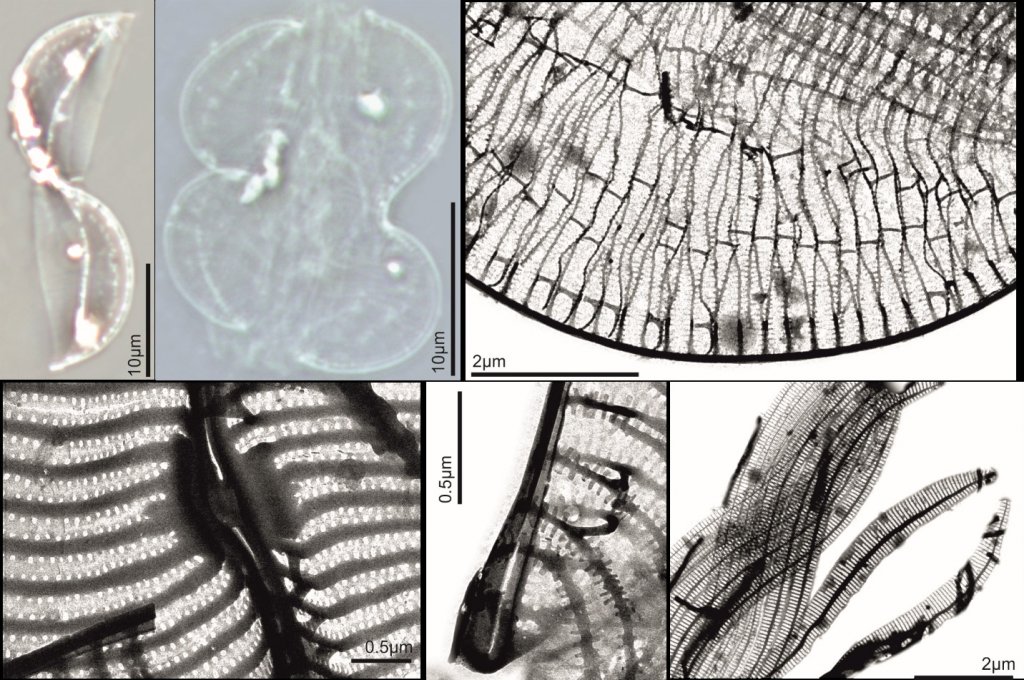Isotype of this species is deposited in the Croatian National Diatom Collection as permanent slide under accession number HRNDC000006.

The name is derived from Latin adjective “umbratica” which means living in shade, devoted to sheltered leisure. Refers to the low light conditions in the water column at 250 m, the source of original material from which the species has been isolated.
Croatia: Adriatic Sea, south–eastern coast (N 42°24ʹ E 17°55ʹ). Plankton sample taken at 250 m depth, collected on March 10, 2016 by M. Mejdandžić. Holotype slide of the strain BIOTAII–21 deposited in The Friedrich Hustedt Diatom Study Centre, Bremerhaven, Germany as BRM ZU10/89. Isotype slide deposited at Macedonian diatom collection, Skopje, Macedonia under accession number 011649 MNDC. GenBank accession numbers for BIOTAII-21 are MF000604 (18S rRNA), MF000629 (rbcL) and MF000615 (psbC).
Delicate cells with lightly silicified frustules and one multilobed plate plastid, variously torsioned around the apical axis: 7.2–27.0 μm long, 5.9–14.7 μm wide at constricted central part and 12.4–22.0 μm at widest part. Valves linear–lanceolate with acute apices, 7.2–27.0 μm long, and 5.2–8.6 μm wide at central part. Elevated keel transitions into the valve body creating an impression of an arcuate line. Virgae are straight, parallel, and simple, extending through whole valve body, rarely bifurcated towards the keel–body transition. Valve striae 40–55 in 10 μm. Keel striae 40–55 in 10 μm. Basal fibulae sometimes interconnected with adjacent ones with transverse connections forming H or W shape, 4–5 in 1 μm. The striae are closed by a hymen with roundish to elliptical perforations arranged in two parallel lines along the stria edges. Intermediate fibulae interconnecting two adjacent keel virgae characteristically arranged in a form of an irregular, continuous line, 4–6 in 1 μm. Sigmoid raphe with simple and straight central and terminal endings. Raphe fibulae 40–45 in 10 μm. The cingulum is composed of one valvocopulae and three copulae with smooth external surface. All girdle bands cross each other, appearing decussate. Copulae with 55–70 transverse striae in 10 μm and valvocopulae with 50–65 striae in 10 μm. Striae are occluded by very lightly silicified hymenes perforated with round to elliptical poroids with 7–14 advalvar and 10–21 abvalvar poroids in valvocopulae striae, respectively.